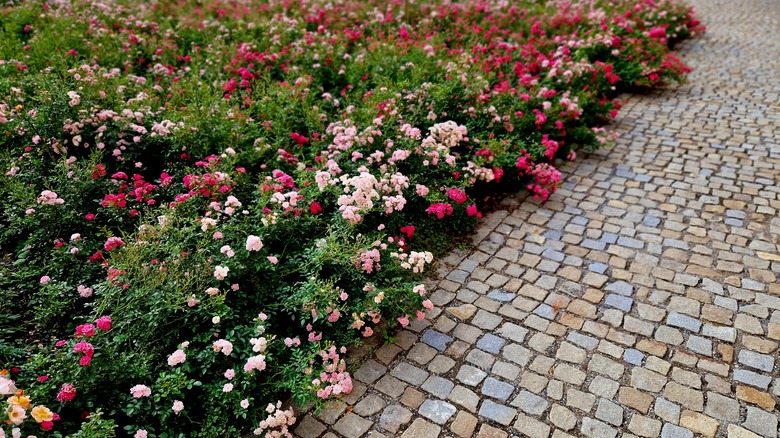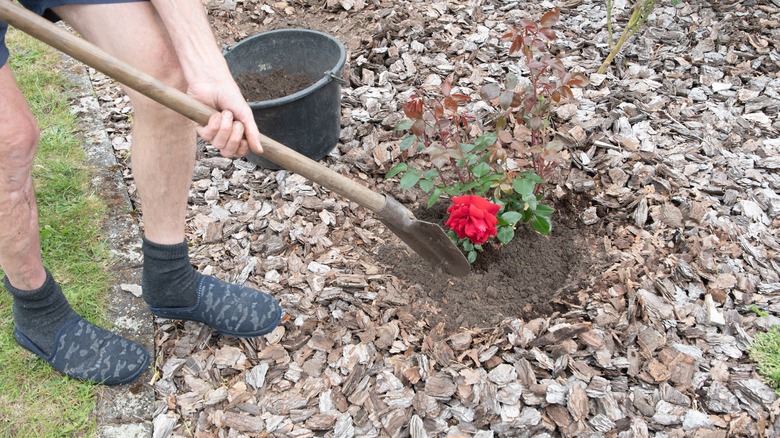Tips And Tricks For Planting Ground Cover Roses (& Pests To Watch Out For)
Imagine looking out your window and seeing masses and masses of brightly colored blooms covering your flower beds. That's what planting ground cover roses can do for your garden. These types of roses are mainly trailing varieties with stems that happily spread along the ground. They're perfect for growing in flower beds, along borders, or tumbling down a bank or over a stone wall. They are also fairly low-maintenance and can flower continuously. This makes them a welcome addition to many gardens. In fact, they might just be the most ideal plants for your sloped yard as they help to hold the soil in place with their thorny branches. Planting ground cover roses is not all that different from planting regular roses if you follow our tips.
The best tip for planting these delightful rose varieties is to choose a fairly sunny spot in your garden with organically enriched, free-draining soil. This will give the plants a good head-start, and you'll be rewarded with lots of blooms. You can plant them fairly close together to fill in spaces in your garden but try to follow the spacing recommendations on the plant label. As these roses don't produce a really dense mat over the soil, weeds can still come through. So, it can be a good idea to cover the soil around the base of the plants with a thick layer of mulch, too.
More planting tips and pests you need to keep an eye out for
Before planting ground cover roses, you'll need to dig a hole at least two times the width of the root ball, allowing the roots to spread out. Water the roses in their nursery pot before taking them out. If you're planting bare-rooted roses, place the roots in a bucket of water for around 24 hours to hydrate them. Gently tease out the roots a little before placing each plant into its hole, making sure that the top of the root ball is at ground level. You might need to create a mound in the center of the hole to achieve this. Once you've placed the rose in the hole, half-fill it with soil, then fill it with water. Wait for the bubbles to stop coming to the surface and fill the rest of the hole with soil, firming this down gently. Water deeply again, making sure that the moisture can seep down.
You'll find that pests aren't much of a problem with ground cover roses. The most common pests to watch out for are aphids and deer, which are attracted to new growth. Aphids can simply be hosed off, or you might want to plant sage next to your roses to attract pest-hungry beneficial insects such as hoverflies and ladybugs. There are also ways to prevent deer from feasting on your roses, like using a deer repellent spray or natural ingredients to repel deer from your yard.

